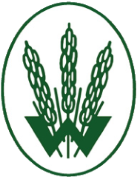Marshalls Heath Nature Reserve
Marshalls Heath lies about a mile west of the village just north


The site is well-known locally for its large anthills that are such an attractive and unusual feature of the site. The ants (Yellow Hill Ants, Lasius flavus) that construct the anthills are extremely common, but it is unusual to find such large anthills, and Marshalls Heath has one of the finest colonies among the Hertfordshire nature reserves.
Heathland is a rare and disappearing habitat in Hertfordshire. Dependent on poor acidic soils and regular management, typically grazing, large areas of heathland have been lost in the last century. At Marshalls Heath the days of sheep grazing by commoners may be gone, but the Parish Council ensures that the grass is cut and removed every year. On a calm and sunny summer’s day the heath is at its best. You’ll be amazed at the number of butterflies and insects moving around the masses of wild flowers.
For further information (provided by Dr John Murray), visit www.wheathampstead.net/mh
